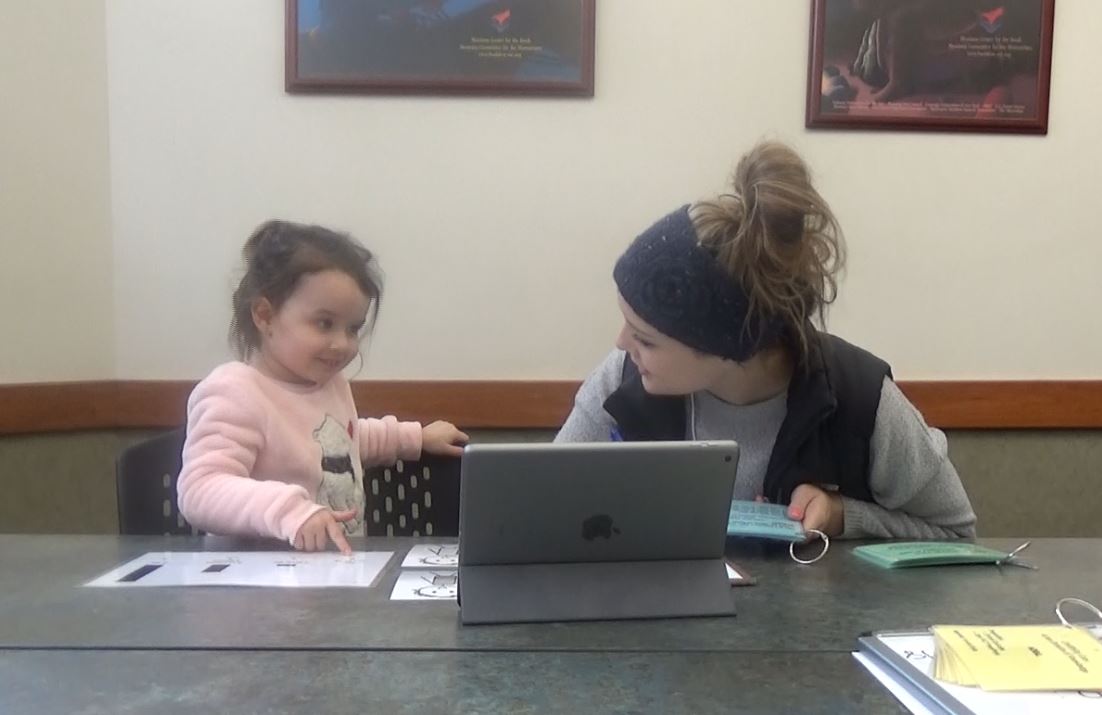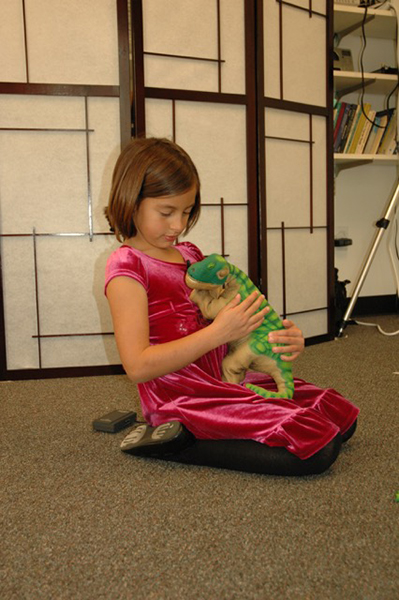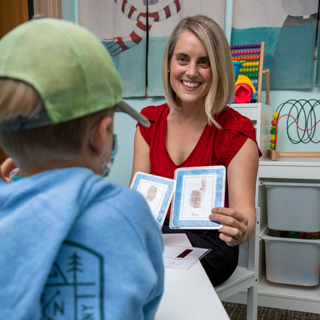Our Research
Current Studies
HUMANS + ROBOTS MORALITY STUDY
Do children think an autonomous or remote-controlled robot is responsible for its actions?
Who: 3 and 5 year olds
What: Researchers from the UM Minds Lab are exploring whether children think a robot dog is responsible for its harmful actions. Does it matter whether the robot dog is autonomous or remote-controlled? More generally, how do children think about robot dog that is autonomous or remote controlled? How do children's judgements compare to their thinking about people?
Where: UM Living Lab @ Missoula Public Library
How: Sign up here to schedule a session for your child to participate!
SHARING + LEARNING WITH PEOPLE AND TECHNOLOGY
How do learn from and share with people versus technologies?
Who: 5-8 year olds
What: Researchers from the UM Minds Lab are exploring children's children’s learning and sharing with people and technologies, like social robots and smart speakers. We are interested in whether moving in sync with another (like clapping) affects how children think about and share with others. We are also trying to better understand who (or what) children prefer to learn from, and if their learning preferences depend on the type of information.
Where: UM Living Lab @ Missoula Public Library
How: Sign up here to schedule a session for your child to participate!
INTENTIONS + CULPABILITY
How do children understand one's intentions and their responsibility for their actions?
Who: 3-5 year olds
What: Researchers from the UM Minds Lab explored 3- to 5-year-olds' understanding of doing things 'on purpose' versus 'by accident' and how that understanding relates to one's responsibility for their actions. For example, think about the difference between knocking over a glass of water by accident or on purpose -- people tend to judge the latter more harshly! In this study, the Minds Lab team is expanding our understanding of the link between intentions and culpability by probing children's thinking when the agent is a person or a social robot.
Thank you to all the children and families who participated! We look forward to sharing our results!
Our Past Studies
Do children always trust confident individuals? Not when it comes to moral deliberations.
 Children often treat confident individuals as more credible sources of information. Yet, children may interpret an individual's level of confidence differently depending upon the type (or domain) of knowledge. For example, when dealing with factual information (e.g., name of novel object), a person who is confident in their answer is often viewed as more trustworthy. However, when thinking about about moral issues, hesitancy may reflect a deeper level of thoughtfulness, and therefore credibility. This study investigated children’s credibility judgments of individuals who differed in their level of confidence (confident vs. hesitant) in two domains of knowledge (factual vs. moral). We found that children preferred a confident individual when learning factual information, but not when deliberating about moral claims.
Children often treat confident individuals as more credible sources of information. Yet, children may interpret an individual's level of confidence differently depending upon the type (or domain) of knowledge. For example, when dealing with factual information (e.g., name of novel object), a person who is confident in their answer is often viewed as more trustworthy. However, when thinking about about moral issues, hesitancy may reflect a deeper level of thoughtfulness, and therefore credibility. This study investigated children’s credibility judgments of individuals who differed in their level of confidence (confident vs. hesitant) in two domains of knowledge (factual vs. moral). We found that children preferred a confident individual when learning factual information, but not when deliberating about moral claims.
Unjustified Confidence: Children’s understanding of when a person’s confidence and hesitancy is a cue to their credibility
Although a person's level of confidence often correlates with their knowledge, some people are unjustifiably (or overly) confident. In three studies, we tested whether children (3-12 years old) trusted an overly confident or appropriately hesitant individual. We found that children use a person’s history of calibration (how well their confidence is associated with their knowledge) to guide their learning. By around age 4 children trust an appropriately confident person over one who is overly confident. However, even 7- to 8-year-olds struggled to understand when hesitancy is appropriate (e.g., when a person lacks knowledge). These results suggests that understanding confidence (and over confidence) emerges relatively early in childhood, and yet appreciating that a justifiably hesitant individual is more credible is a later developing achievement.
Publications
Birch, S. A. J., Severson, R. L., & Baimel, A. (2020). Children's understanding of when a person's confidence and hesitancy is a cue to their credibility. PLOS ONE, 15 (1), e02227026. https://doi.org/10.1371/journal.pone.0227026
Imagining others' minds: The positive relation between children’s role play and anthropomorphism
Children readily engage in 'role play', whether personifying toys or imagining invisible friends. Doing so involves imagining others’ minds and internal states. Similarly, anthropomorphism – the attribution of internal states to nonhuman others (e.g., animals, inanimate nature, or technologies) – also involves imagining others’ minds and internal states. This study investigated the relation between children's (5, 7, and 9 years) role play and anthropomorphism. We found that children who were the most imaginative (type and frequency of their role play) were much more likely to anthropomorphize! These results suggest that those 'expert' role players can readily imagine non-human others' minds, including their imaginary friends, robots, and trees.
Publications
Severson, R. L., & Woodard, S. R. (2018). Imagining others' minds: The positive relation between children's role play and anthropomorphism. Frontiers in Psychology, 9, 2140. doi: 10.3389/fpsyg.2018.02140
How Children Think About Robots!
 One way that children organize the world is into living and non-living things. But robots seem to straddle the boundaries – they are pieces of technology, but they also interact as if they have intentions and feelings. How do children understand such personified technologies — as living things, non-living things, or something in-between? In a series of studies, we have looked at how children and adolescents think about and interact with real robots.
One way that children organize the world is into living and non-living things. But robots seem to straddle the boundaries – they are pieces of technology, but they also interact as if they have intentions and feelings. How do children understand such personified technologies — as living things, non-living things, or something in-between? In a series of studies, we have looked at how children and adolescents think about and interact with real robots.
Publications
Severson, R. L., & Carlson, S. M. (2010). Behaving as or behaving as if? Children's conceptions of personified robots and the emergence of a new ontological category. Neural Networks (Special Issue on Social Cognition: From Babies to Robots), 23, 1099-1103.
Kahn, P. H., Jr., Kanda, T., Ishiguro, H., Freier, N. G., Severson, R. L., Gill, B. T., Ruckert, J. H., & Shen, S. (2012). “Robovie, you’ll have to go into the closet now”: Children’s social and moral relationships with a humanoid robot. Developmental Psychology, 48, 303-314.
Kahn, P. H., Jr., Severson, R. L., & Ruckert, J. H. (2009). The human relationship with nature and technological nature. Current Directions in Psychological Sciencee, 18, 37-42.
